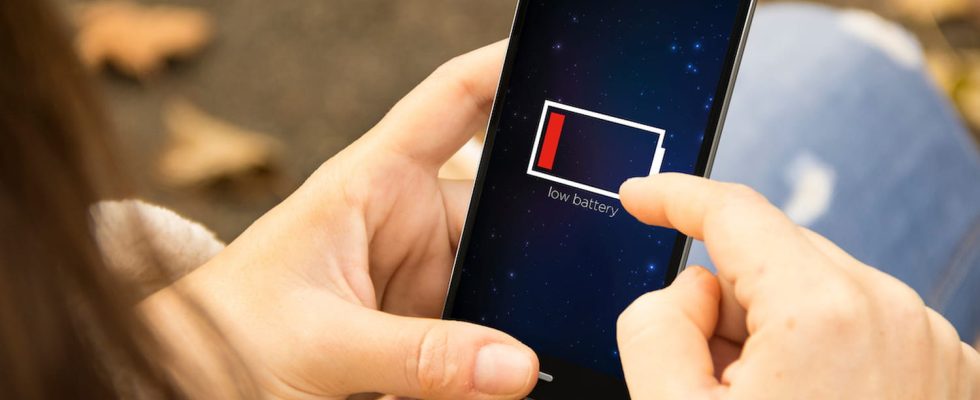Is your smartphone battery draining a little too quickly for your liking? Apps running in the background may be the cause. If you want to regain some autonomy, it is strongly recommended to uninstall them.
Despite all the efforts of smartphone manufacturers to improve the autonomy of their devices, the batteries of our dear mobiles continue to melt like snow in the sun. It is in fact not uncommon for many users to end the day with a gauge in the red. Several factors are responsible for this phenomenon, first and foremost the ever more intensive use of smartphones. The screen is the most energy-intensive component. The more you consult it, the longer it stays on and the greater its impact on the autonomy of the device. But the screen is of course not the only culprit.
The apps that you use on a daily basis also have their share of responsibility in the energy consumption of your mobile. Starting with video streaming services (Netflix, Amazon Prime Video, Disney+, etc.) which consume a lot of energy to receive, decode and display image streams, as well as all games which use 3D extensively. But others are more sneaky: because they happily drain the reserve not only when you use them, displaying them on the screen, but also when you are not looking at them and using other applications, and even when the smartphone is on standby. Indeed, many applications continue to run in the background constantly. They remain connected to the Internet through your operator’s Wi-Fi or 4G/5G network to receive and send data, which allows them, for example, to show you notifications at any time. And while some apps are well optimized to consume as little energy as possible even when running in the background, many don’t care about this aspect. Recent developments in Android include functions for detecting demanding apps. However, if you notice that your smartphone’s battery is running out of power a little too quickly, the best thing to do is to uninstall the apps that you end up using little and which consume energy unnecessarily. Several studies, such as those carried out by pCloud or Helios in particular, agree to draw up a non-exhaustive list of apps recognized as very energy-intensive:
- Amazon
- AirBnB
- Facebook Messenger
- Fitbit
- Microsoft Outlook
- Skype
- Snapchat
- TikTok
- Tinder
- Uber
- Youtube
How to limit the energy consumption of mobile apps?
Most of these apps use several functions of the smartphone constantly. The Internet connection, of course, but also, often, the location options which actually use the mobile’s GPS module. A very energy-intensive component. If you use these apps little or not at all, it is advisable to uninstall them. If, on the other hand, they are useful to you from time to time, you can limit their background activity.

On Androidaccess the Settings then choose Battery. Tap the name of one of the listed apps then activate the switch Background usage limits. On iOSin the Settingsscroll down and tap an app name, then toggle the switch Refresh in background in inactive position. Finally, if the app is backed by a website offering the same services (like Facebook, YouTube or Outlook), prefer to use the latter through a browser like Chrome, Safari or Firefox.
Other good reflexes can allow your mobile to use less energy. Turn off the location feature – the GPS receiver – if you have it on all the time, it uses a lot of power, as well as the Always On Display (which leaves the screen constantly on to show the time and a few widgets ). More radically, you can also apply the Energy Saving mode present on Android and iOS which limits the activities of all apps, lowers the screen brightness and processor speed. In such conditions, your smartphone will be able to accompany you for at least two days to request a passage through the charging box.
